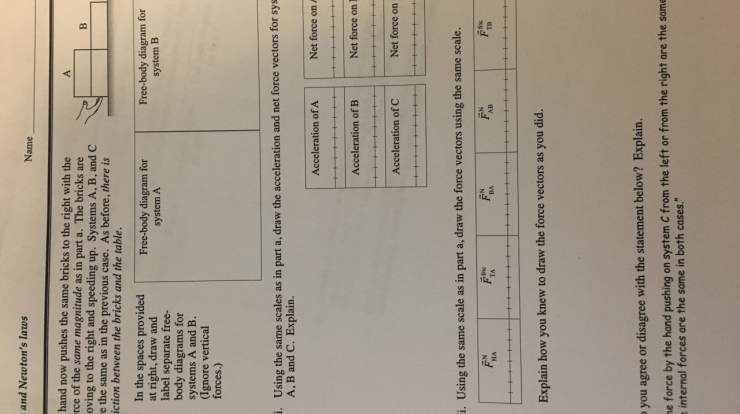Find the ratio of the masses m1 m2 – The ratio of the masses m1 and m2, often denoted as m1/m2, is a fundamental concept in physics and engineering. It represents the quantitative relationship between the masses of two objects and plays a crucial role in understanding various phenomena.
This guide provides an in-depth exploration of the mass ratio, its significance, methods of determination, applications, and influencing factors.
Mass ratio finds applications in diverse fields, including chemistry, physics, and engineering. In chemistry, it is used to determine the composition of compounds and the relative abundance of isotopes. In physics, it helps analyze the motion of objects under the influence of forces and in understanding the properties of materials.
Engineering applications include the design of structures, vehicles, and machinery, where mass ratio is crucial for optimizing performance and efficiency.
1. Define Mass Ratio

Mass ratio is a fundamental concept in physics and chemistry that describes the relative masses of two or more objects. It is defined as the quotient of the mass of one object divided by the mass of another. The mass ratio provides insights into the composition, properties, and behavior of objects.
The mathematical formula for calculating mass ratio is:
Mass ratio = Mass of object 1 / Mass of object 2
2. Methods for Determining Mass Ratio
Experimental Methods, Find the ratio of the masses m1 m2
Mass ratio can be experimentally determined using various methods, including:
- Analytical Balances:These high-precision instruments measure the mass of objects with great accuracy. By placing the objects on the balance and recording their masses, the mass ratio can be calculated.
- Triple Beam Balances:Similar to analytical balances, triple beam balances provide a less precise but more accessible method for determining mass. The object’s mass is determined by adjusting the beams to balance the object’s weight.
- Spring Scales:Spring scales measure the force exerted by gravity on an object. By comparing the forces exerted by two objects, the mass ratio can be calculated.
3. Applications of Mass Ratio
Mass ratio has numerous applications in various fields:
- Chemistry:Determining the mass ratio of reactants and products in chemical reactions is crucial for stoichiometric calculations and understanding reaction mechanisms.
- Physics:Mass ratio is used in calculating the center of mass of objects, understanding the dynamics of collisions, and analyzing the properties of celestial bodies.
- Engineering:Mass ratio is critical in designing structures, vehicles, and other systems where weight and strength are crucial considerations.
4. Factors Affecting Mass Ratio: Find The Ratio Of The Masses M1 M2

The mass ratio of objects can be influenced by several factors:
- Density:Objects with different densities will have different mass ratios even if they have the same volume.
- Volume:Objects with the same density but different volumes will have different mass ratios.
- Temperature:Changes in temperature can affect the density of objects, leading to changes in mass ratio.
- Pressure:External pressure can alter the volume of objects, affecting their mass ratio.
- External Forces:Forces acting on objects, such as gravitational forces or electromagnetic forces, can influence their mass ratio.
Question & Answer Hub
What is the significance of mass ratio?
Mass ratio is significant because it provides a quantitative measure of the relative masses of two objects. It is used in various fields to understand the composition, properties, and behavior of objects.
How is mass ratio determined experimentally?
Mass ratio can be determined experimentally using analytical balances, which measure the masses of objects with high precision. The masses m1 and m2 are measured separately, and their ratio is calculated as m1/m2.
What are some factors that can affect mass ratio?
Factors that can affect mass ratio include density, volume, temperature, pressure, and external forces. Changes in these factors can alter the masses of the objects and, consequently, their mass ratio.

